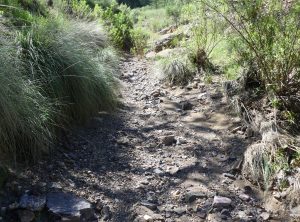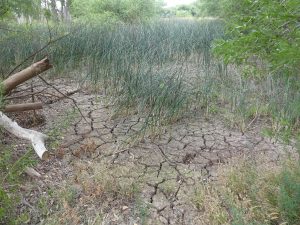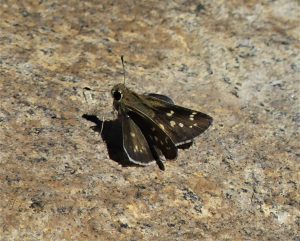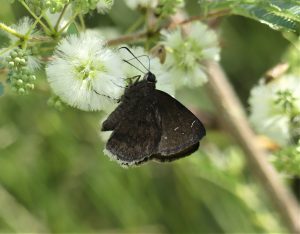By Peter Hall, eButterfly advisor
A long-term drought has gripped many parts of the western U.S. on and off for years. South-east Arizona has been prone to these dry spells, sometimes with serious effects for vegetation and wildlife. Andrew Hogan, in an earlier posting to eButterfly, showed the results of butterflies of the droughts at the Tohono Chul Park in the city of Tucson over seven years.
In late August, I travelled to S-E. Arizona from my home in Toronto. I was hoping to time the visit to take advantage of the normal monsoon rains that hit this area in the late summer and bring on flights of many butterfly species. Unfortunately, this year, the rains never arrived for many parts of the region, and it is now termed by meteorologists as a severe drought area, particularly in the counties of Cochise, Santa Cruz and parts of Pima.
I had decided to focus my trip on two areas that had been productive for butterflies in past visits – the Huachuca Mountains, particularly Ramsey Canyon, and the Tucson area itself. However, I had never been there in late summer, so I anticipated a number of lifers. Many of these never appeared.
During the two weeks, I was there, with daily visits to a wide variety of locations, temperatures slowly escalated from reasonable highs of about 85 degrees Fahrenheit during the afternoon in the Huachuca Mountains to more than 110 degrees in the Tucson area in the latter part of the trip. Most days, it meant that butterfly searches had to take place early in the morning, ending by about 11:00 a.m. at the latest, as most butterflies stopped flying because of the heat (and most people wisely retreated to their air-conditioned residences and offices).
The first noticeable effect was that relatively few butterflies were seen compared to what would have been there in a normal monsoon season, and the species counts were lower than expected. Around 15 species, on average, a day was considered a good day.
The only numerous species were by far the two migrants, Cloudless Sulphur and Painted Lady. Most of these had come up from Mexico as they usually do in late summer and early fall into the region. Dozens of these could be seen in many locations as they wandered looking for nectar sources. Any parks, gardens or reserves with flowering shrubs and some available water were where I quickly learned I should focus my activities.
The main obvious effect of the drought was on existing, normally wet features such as marshes, creeks, river edges, ponds and washes in the mountains. Almost all were bone dry (see photos of a dry wash along Harshaw Road near Patagonia and a dried-up marsh along the San Pedro River near Sierra Vista). Such long-term conditions could be devastating for the immature stages of the butterflies and for any recently emerged adults.
A particular hope for me was to find some of the roadside-skipper species that should have been flying during the monsoons. I only found one or two each for two species, including the Toltec which was a lifer (photo).
A number of the commoner blues, such as Ceraunus and Marine, were not difficult to find, as were the larger swallowtails, Pipevine and Two-tailed. However, some of the other normally common species that were year-round residents were few and far between. I found no dogfaces, buckeyes or crescents and only one each of Mexican Yellow, Tailed Orange and the normally abundant Funereal Duskywing. Perhaps this was the most telling statistic, as I saw only one each for 30 of the 55 species encountered.
One other effect of the drought was that a number of species had delayed their emergence, waiting for the rains that did not come. One example of this was Drusius Cloudywing, for which the latest record in Arizona was August 26, according to local expert Fred Heath. I encountered a relatively fresh specimen feeding on acacia flowers in lower Ramsey Canyon on September 3 (photo).
I realize that the observations in this article are for a short visit to only one part of the vast American southwest and are only anecdotal. However, conversations with other butterfliers in the region, and in consulting the literature, lead me to believe that it is representative of the daunting reality that many butterflies are facing as the long-term drought continues.
All of my sightings have been entered into eButterfly.



